Image Archive



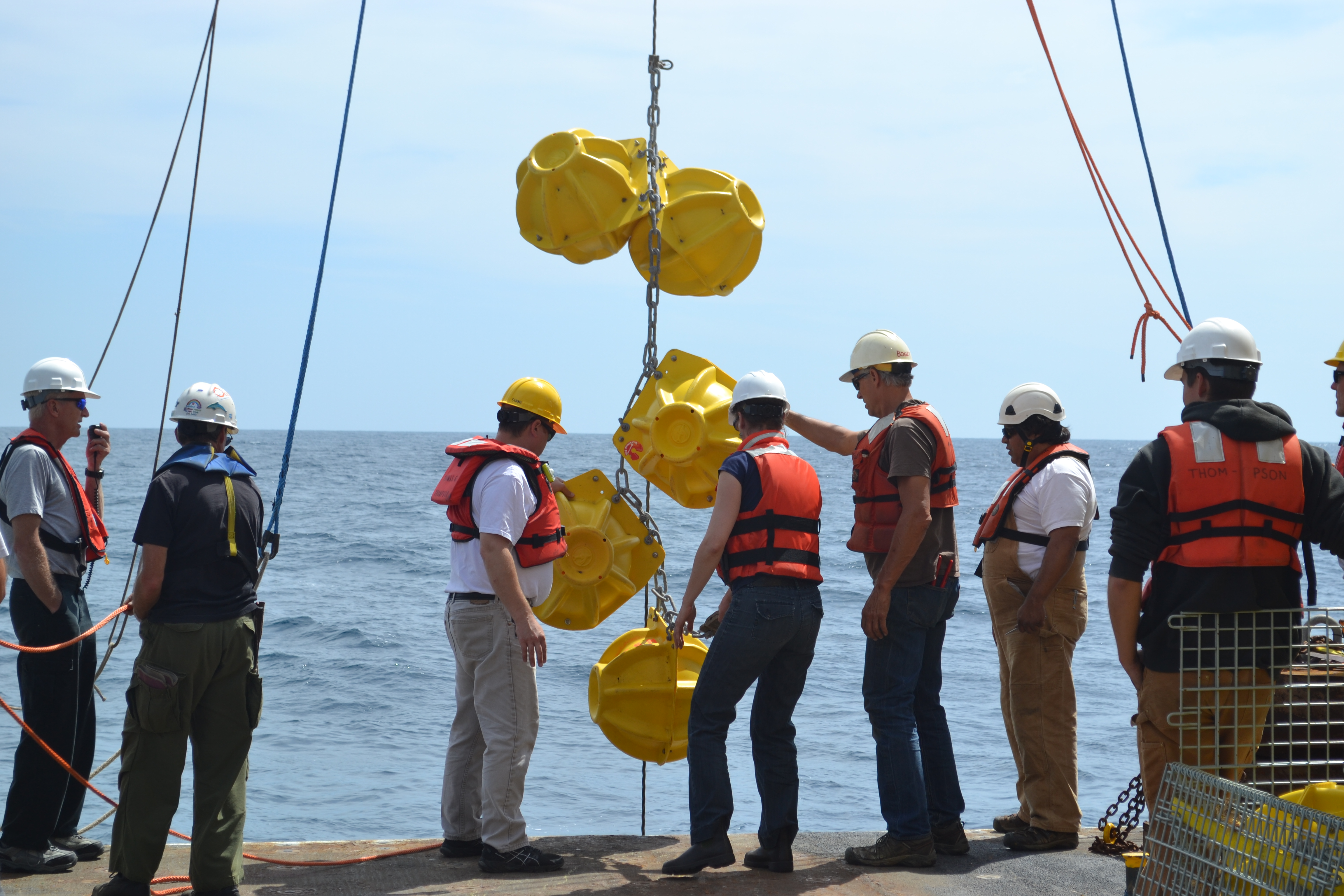



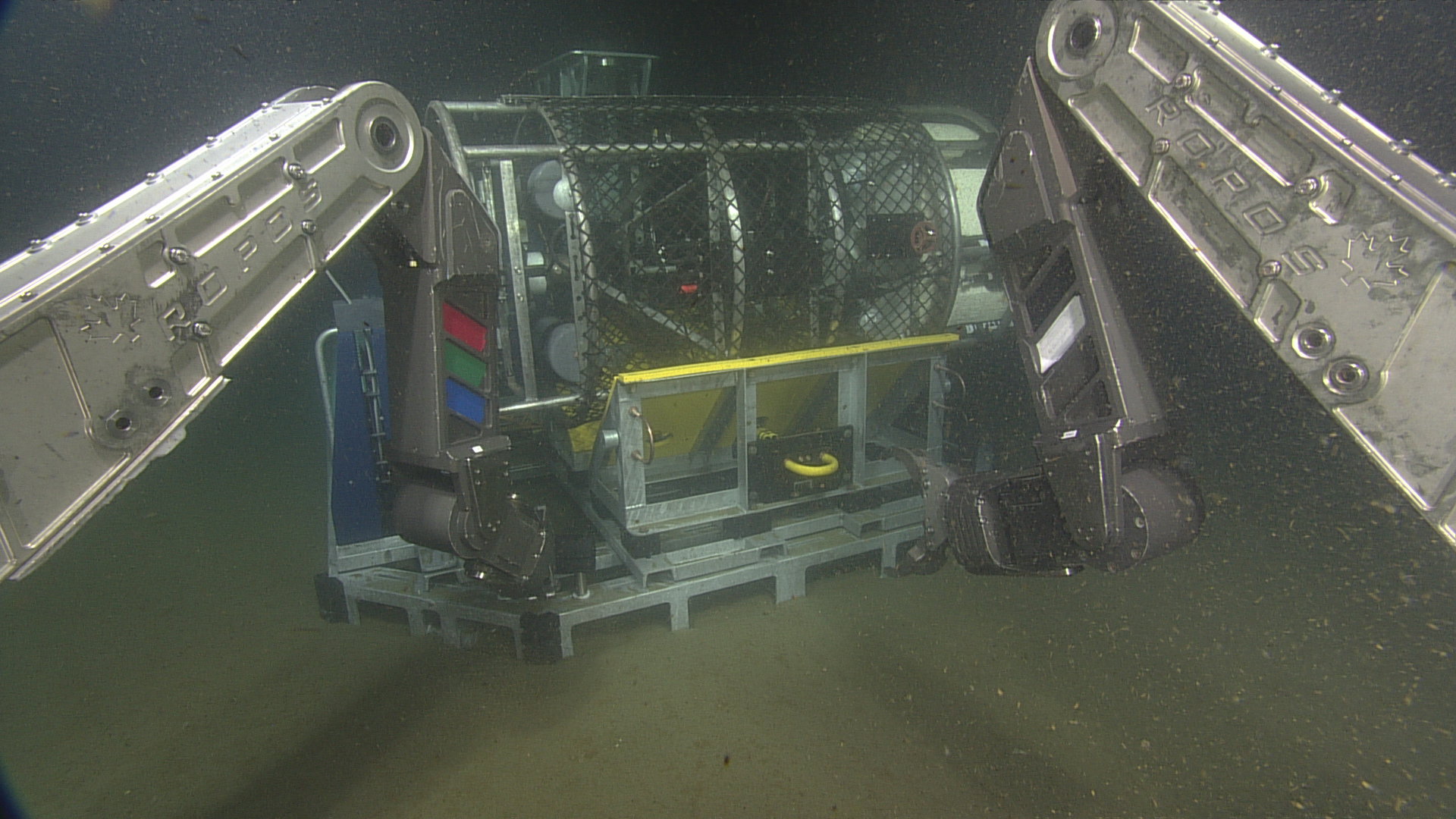



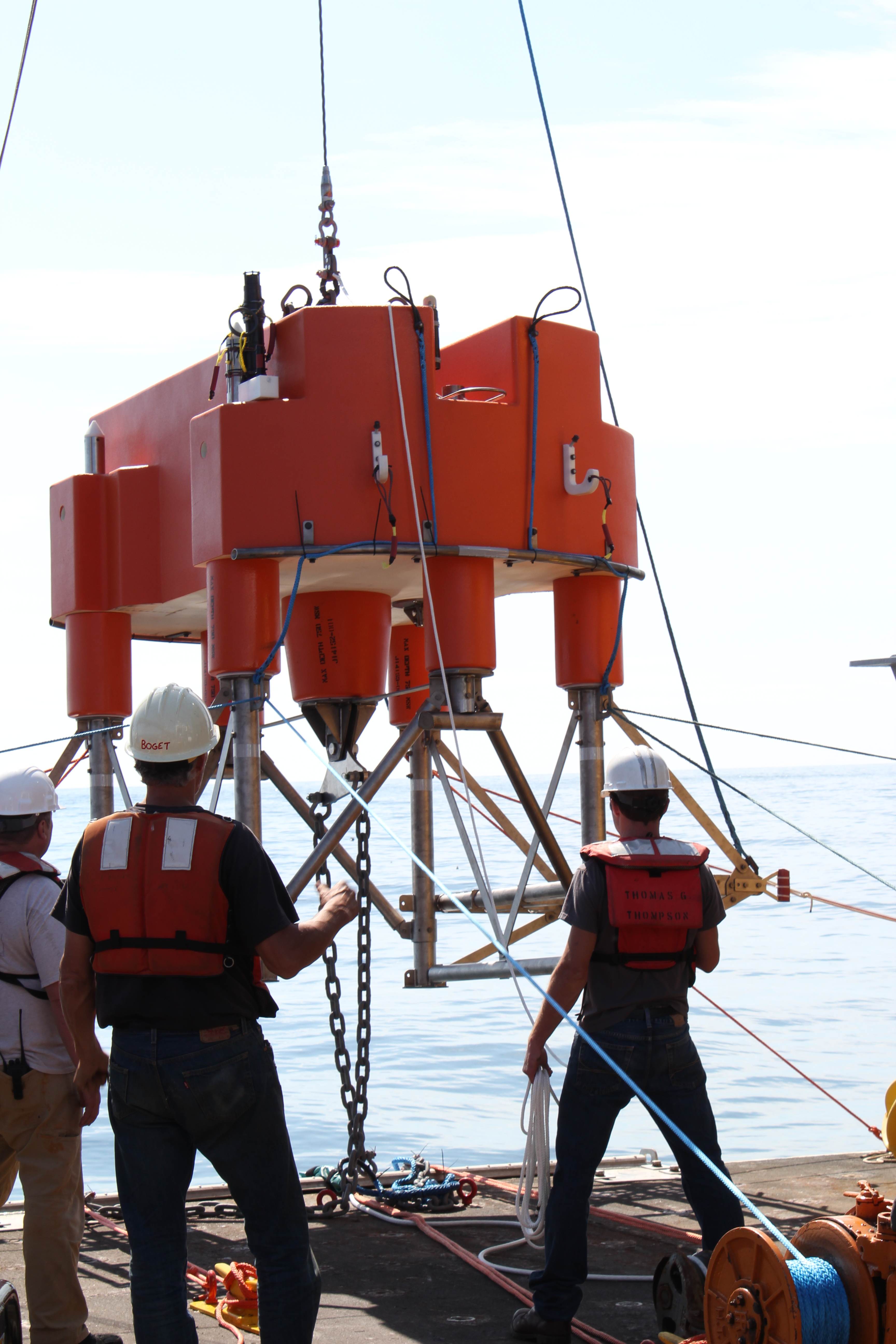



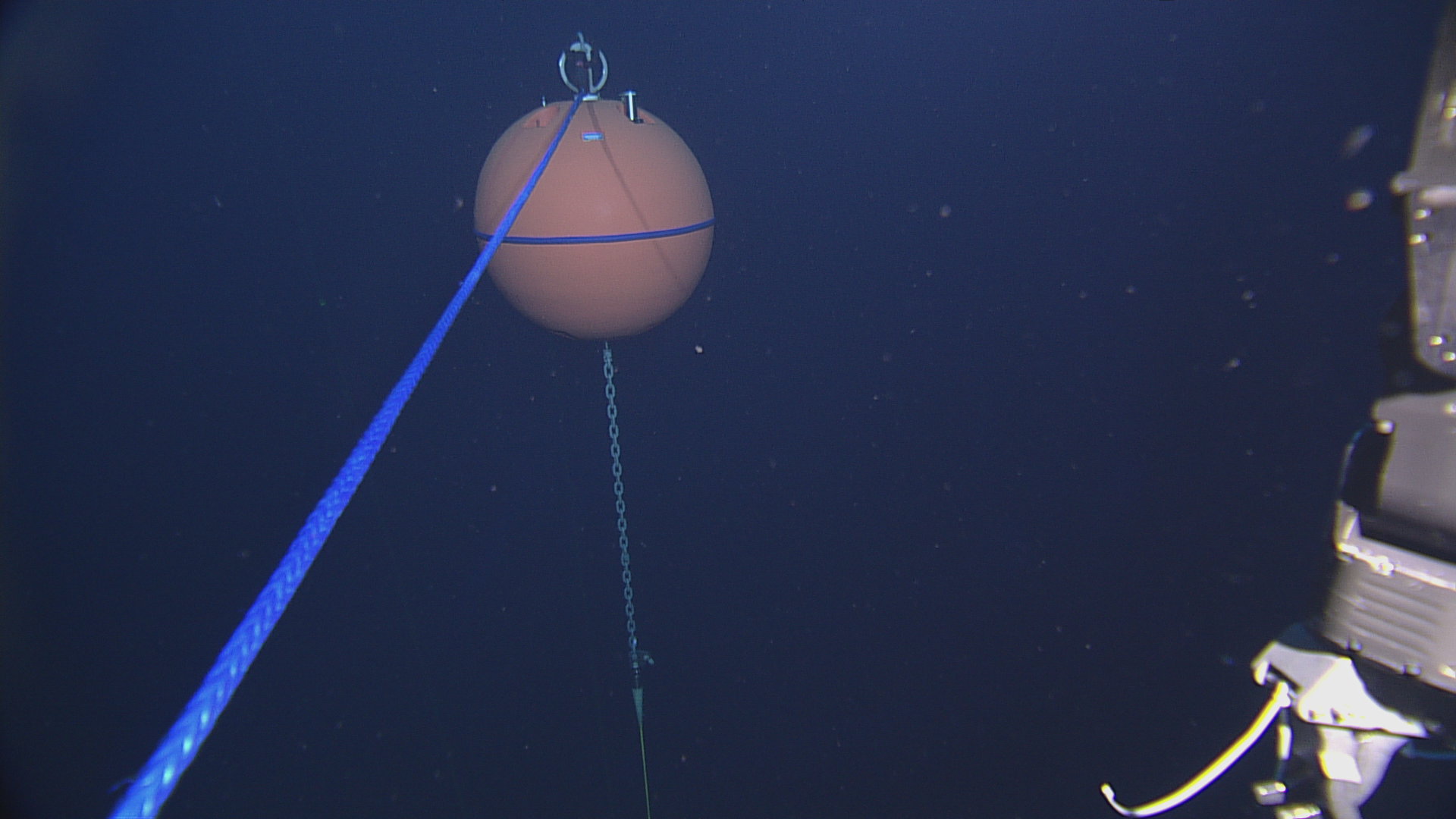

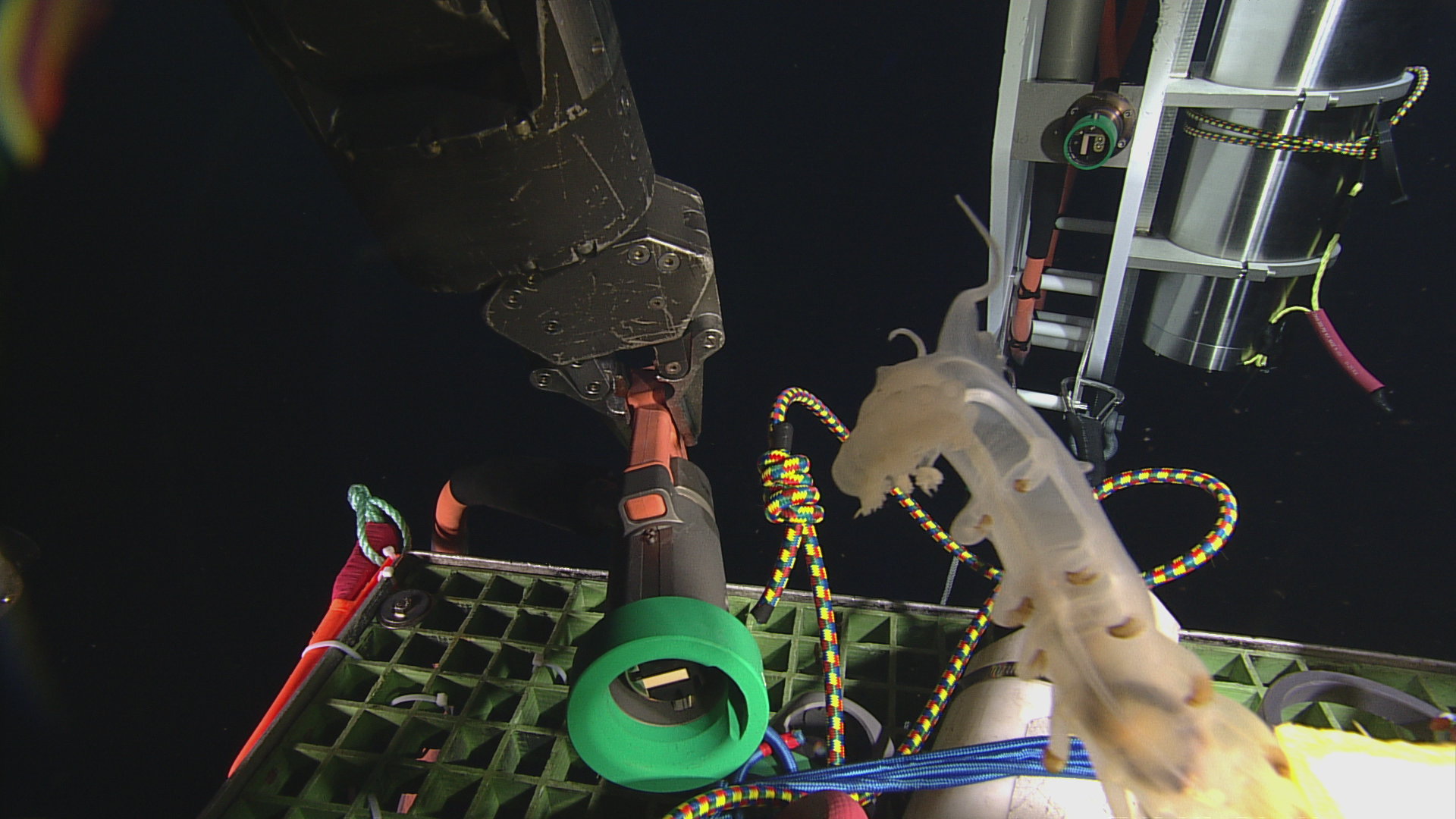

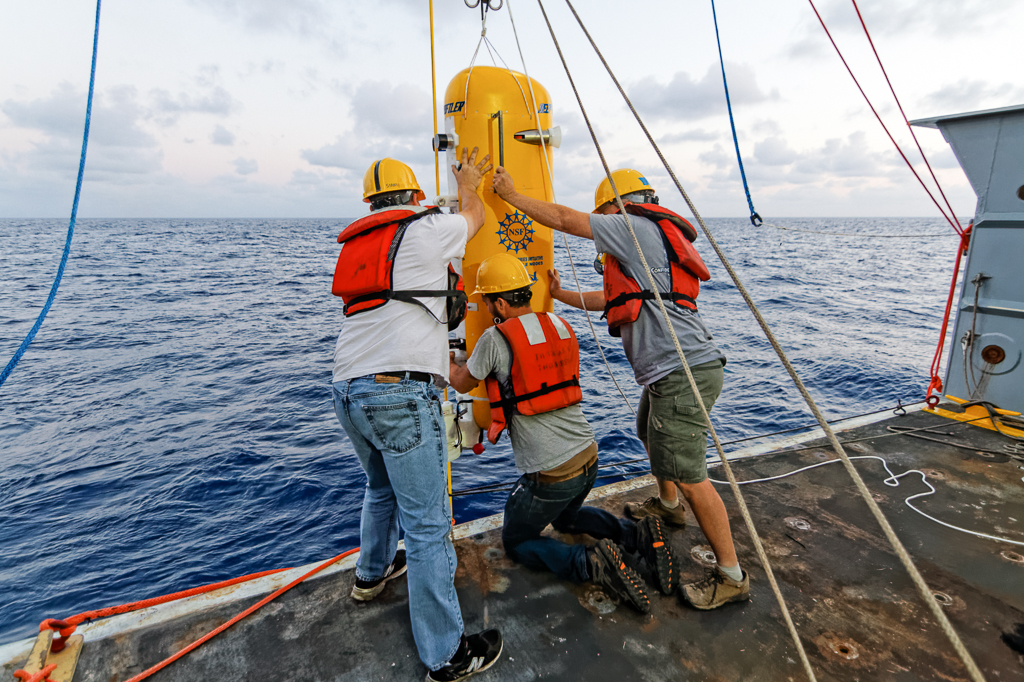
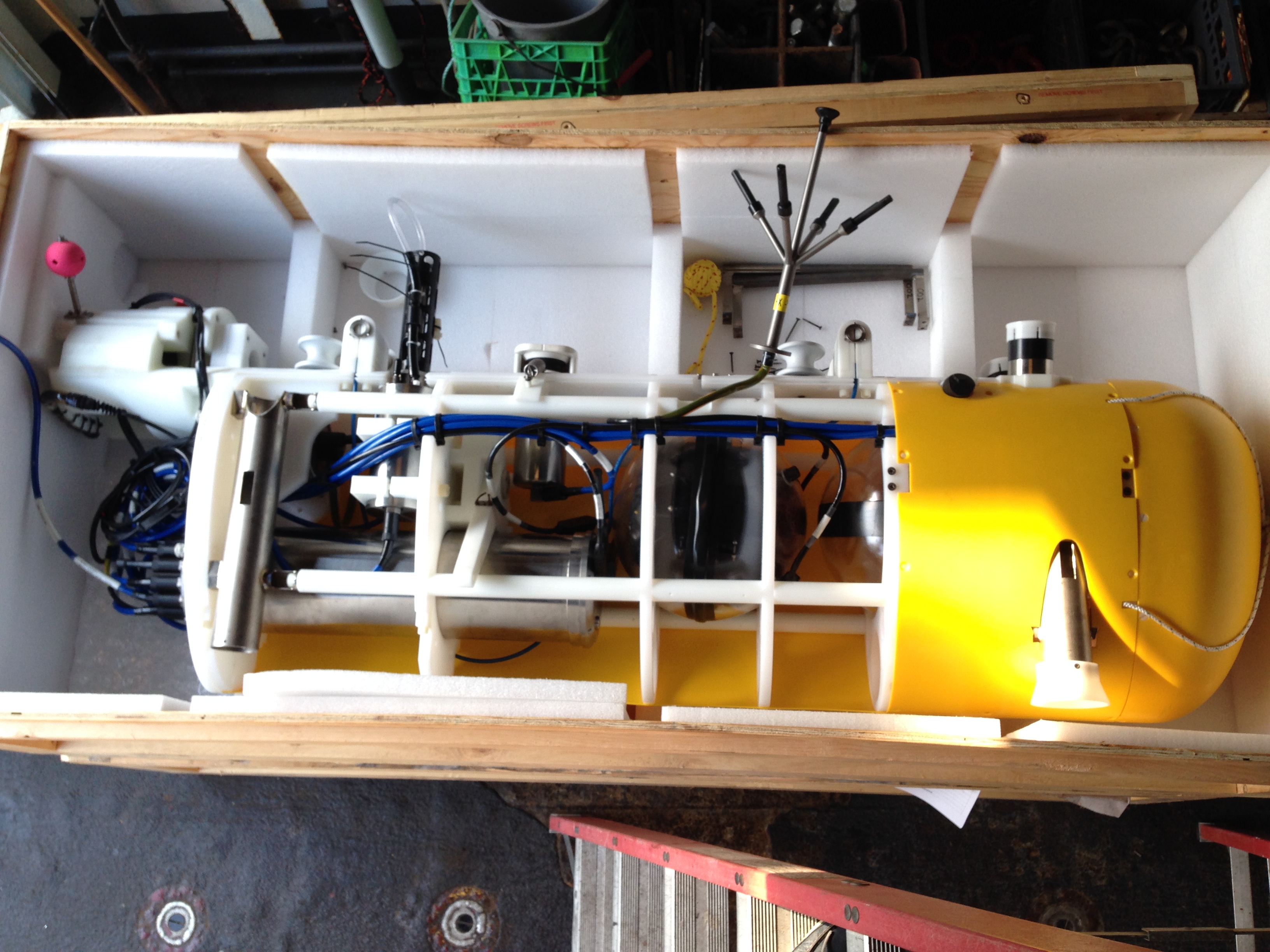







An instrumented "Platform Interface Assembly" from the Slope Base site is recovered onto the deck of the R/V Revelle during the OOI-NSF Cabled Array expedition lead by the University of Washington. The platform was attached to a 7,000 lb, 12 ft across mooring platform at 200 m beneath the suface. Attached to the cable it host 18 instruments sending live data to shore 24/7. Credit: M. Elend, University of Washington, V18.

Life thrives on the Shallow Profiler Mooring platforms at 200 m beneath the oceans' surface. This 12 ft across mooring platform is coated in dense communities of very large anenomes, small pink sea urchins, feathery brown crinoids , and small crabs and shrimp...the closer you look the more you see. Credit: UW/NSF-OOI/Jason.

Since the late summer, 2015, each of the three cabled Shallow Profiler Mooring winched science pods have made >7000 cycles from 600 ft water depth to just beneath the oceans' surface. Real-time command and control of these systems through the Internet provides response capabilites such that the science pods can be stopped to take key measurements in response to events that include the passing over of biologically-rich thin layers. Credit: University of Washington, NSF-OOI/ROPOS, V15.

Yellow "hard hats" encase glass floatation spheres that top the infrastructure on the Deep Profiler Morrings. These spheres were being installed from the fantail of the R/V Thompson as part of the Slope Base Mooring during Leg 2 of the NSF-OOI-UW Cabled Array VISIONS'15 crusie. Credit: Mitch Elend, University of Washington. V15.

The top of the Deep Profiler mooring at the Slope Base site is marked by a large syntactic foam float. This was installed during Leg 2 of the NSF-OOI-UW Cabled Array VISIONS'15 expedition. Credit: NSF-OOI/UW/ISS; V15 - ROPOS Dive R1855.

APL team wrapping yale grips to relieve tension on deployed mooring cable. Leg 2 Visions’15 expedition: Credit: Lauren Kowalski, University of Washington, V15.

An octopus clings to a mooring chain at ~9500 ft water depth near the toe of the Cascadia Margine off of Newport, Oregon. UW/NSF-OOI/CSSF; V15.

ROPOS using the starboard manipulator to pull the release that allowed the sensor pod of the cabled coastal surface-piercing profiler (cCSPP) to swing upwards and float freely in the water. The cCSPP was delivered to the seafloor and placed roughly 12 meters due East of the medium-powered junction box MJ01C at the Oregon Shelf site, in 79 meters of water. Photo Credit: NSF/UW/CSSF, Dive R1801, V14

Wire baskets full of 85 syntatic foam "football" floats to be placed on the Axial Base EOM cable. The mooring platform, 46" and 31" mechanical leg floats can be seen in the background streamed out behind the ship. Credit: Giora Proskurowski

The UW-APL mooring team (l-r) Keith Magness, Avery Snyder, Paul Aguilar and Eric Boget ready the 200m platform and EOM strongback cage for deployment at the Axial Base site. Credit: Mitch Elend

Deployment of the 200m platform of the Endurance Oregon Offshore two-legged mooring, which will eventually host a winched shallow profiler and bioacoustic sonar instruments. Two mooring lines with seafloor anchors are attached to the sides of the platform (rather than the usual single mooring line) to add stability to the platform so it can act as the profiler base. Photo Credit: Skip Denny, APL/UW

Deployment of the 200m platform of the Endurance Oregon Offshore two-legged mooring, which will eventually host a winched shallow profiler and bioacoustic sonar instruments. Two mooring lines with seafloor anchors are attached to the sides of the platform (rather than the usual single mooring line) to add stability to the platform so it can act as the profiler base. Photo Credit: Skip Denny, APL/UW
The sonar beacon being removed from the Endurance Oregon Offshore Shallow Profiler 2-legged mooring junction box, post-deployment. Photo Credit: NSF-OOI/UW/CSSF, Dive R1752, V14

A Boreopacific armhook squid (Gonatopsis borealis) at 384 meters near the Deep Profiler mooring at Oregon Offshore (600 meters deep). Credit: UW/NSF-OOI/CSSF, ROPOS Dive R748, V14.

The Deep Profiler at Axial Base docked in its charging station at the bottom of the mooring. The yellow profiler vehicle climbs up and down the mooring wire between the seafloor and the top buoy, collecting oceanographic data on thin layers in the water column. Photo Credit: NSF-OOI/UW/CSSF, Dive 1742, VISIONS14

An action shot of the modified McLane Deep Profiler at the Axial Base site crawling up the mooring wire. The yellow profiler vehicle climbs up and down the mooring wire between the seafloor and the top buoy, collecting oceanographic data on thin layers in the water column. Credit: UW/NSF-OOI/CSSF, Dive 1742, V14.

A line attached from the top float of the Axial Base deep profiler mooring to the winch on ROPOS, prior to a recovery to diagnose and repair the mooring connector. Photo Credit: NSF-OOI/UW/CSSF, Dive 1740, V14

ROPOS attaching a line to the flotation sphere at the top of the deep profiler mooring at Axial Base, prior to recovery to fix a connector problem. Photo Credit: NSF-OOI/UW/CSSF, Dive 1740, V14

The connectors for the deep profiler mooring and wire AXVMW4, with a photobomb from a Peniagone sea cucumber. Photo Credit: NSF-OOI/UW/CSSF, Dive 1739, V14

APL/RSN engineer Eric Boget gently lowers the deep profiler package into the water during the mooring deployment. Photo Credit: Ed McNichol, Mumbian Enterprises, Inc.

APL/RSN engineers attaching the deep profiler vehicle to the mooring line during deployment at the Axial Base site. Photo Credit: Ed McNichol, Mumbian Enterprises, Inc.

A McLane wire-following profiler, modified to add inductive charging and communications, and holding a CTD, dissolved oxygen, fluorometer and 3D single point velocity sensors. Photo Credit: Kendra Daly, USF

Components of the core seafloor sensor packages associated with the OOI cabled observatory moorings

Components of the OOI cabled observatory deep water profilers

Components of the 200m platforms on the OOI cabled observatory moorings

Components of the OOI cabled observatory shallow water profilers

Deep water and shallow water profiling components of the OOI cabled observatory moorings

Highly capable moorings such as those shown here use power and bandwidth from the cable to investigate water motion and a spectrum of other properties from the sea surface to the seafloor.
- Anemone
- Animal
- Arthropod
- ASHES
- Axial
- Axial Base
- Axial Biology
- Axial Caldera
- Bacteria
- Basalt Lava
- BEP
- Biofouling
- biolgoy
- Biology
- Camds
- Camera
- Camhd
- Central Caldera
- Ciliates
- Cnidaria
- Coastal Biology
- Crab
- Deep Profiler Mooring
- Dive Highlights
- Eastern Caldera
- Echinoderms
- Endurance Array
- Engineering Team
- ENLIGHTEN 10
- Exploratorium
- Fish
- Geology
- HD Camera
- HPIES
- Hydrate Ridge
- Hydrates
- Hydrophone
- Hydrothermal Vents
- Illustration
- Inshore 80 Meters
- Instrument
- International District
- J-BOX
- Jason
- Jellyfish
- Junction Box
- K12
- Lava
- Mollusk
- Moorings
- Nodes
- Nudibranch
- Octopus
- OOI
- Oregon Offshore
- Oregon Offshore 600 m
- Oregon Shelf
- Oregon Slope Base
- People
- PN1B
- PN1D
- Polychaetes
- PPSDN
- Primary Node
- RASFL
- ROCLS
- ROPOS
- ROPOS Dives
- ROV Team
- RV Revelle
- RV Sikuliaq
- RV Thompson
- Salp
- Sample
- SC13
- Science Team
- Sea Cucumber
- Sea Star
- Sea Urchin
- Seafloor
- Seismometer
- Sensors
- Shallow Profiler Mooring
- Shark
- Shipboard
- Shore Station
- Slope Base
- Smoker
- Soft Coral
- Southern Hydrate Ridge
- Sponge
- Squid
- Students
- Students & Guest Participants
- Tmpsf
- Tubeworms
- VISIONS 11 Leg 1
- VISIONS 11 Leg 2
- VISIONS 11 Viewers
- VISIONS 13
- VISIONS 14
- VISIONS 15
- VISIONS 16
- VISIONS 17
- VISIONS 18
- VISIONS 20
- VISIONS 22
- VISIONS 23
- Visualization
